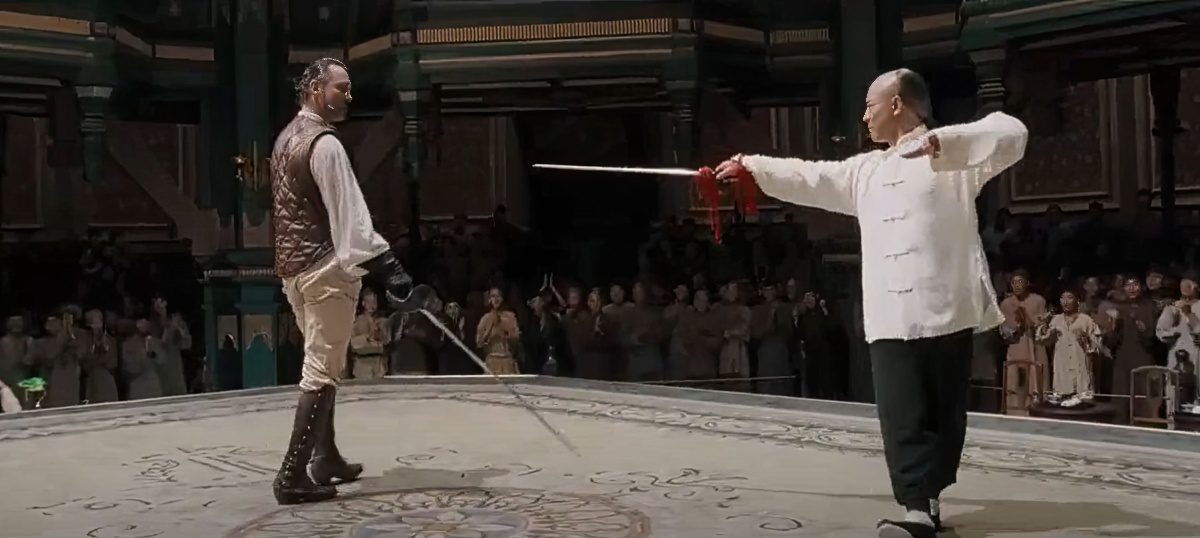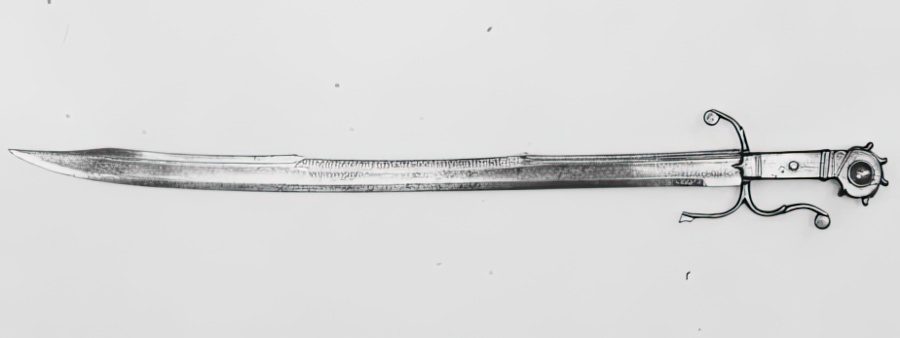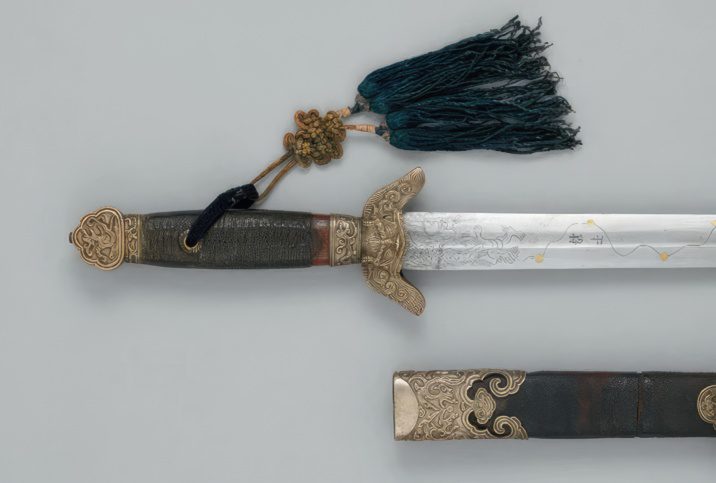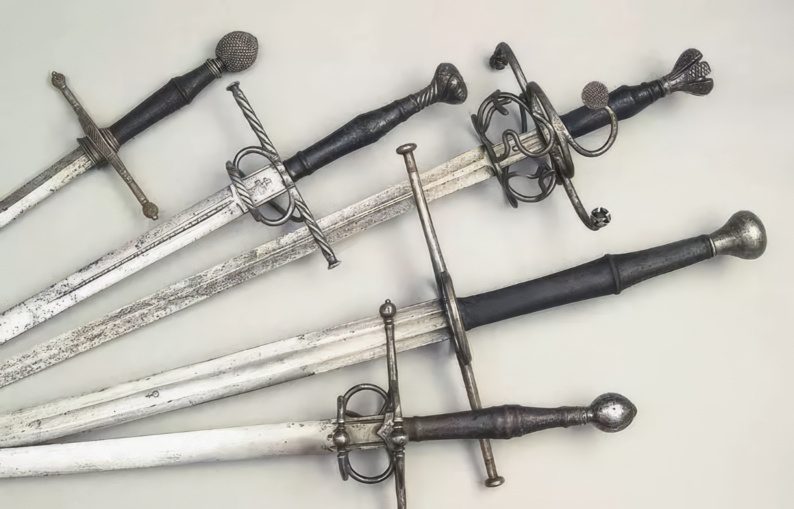Chinese Sword vs. European Sword: The Superior Combat Blade

What’s in this article?
Two of the most recognizable swords in the world are the Chinese and European varieties. Their construction and design quality has improved during the centuries they have been in use. Both swords were created with a focus on warfare, but they also represent much more than just a tool for killing.
Modern society insists on there always being a “better” option, but when it comes to swords, things are more complicated than they appear. To help you tell Chinese and European swords apart, we’ll highlight similar equivalents and show you how they compare and contrast in design and use. We will conclude with our opinion about what type of sword would be better in combat.
Different Design
We will start with the basics and the first thing one can notice about these two sets of sword groups; the visuals, traits, and characteristics. Both the Chinese and European swords are set apart by miles when it comes to their looks, and one can easily distinguish them by their blades, guards, handles, and pommels.
Blade

The blade is the metal piece used for attacking, defending, slashing, thrusting, or chopping with both the European and Chinese sword groups. Throughout history, multiple types of metal have been used for creating these blades, but with time and technological advancement, steel became the most efficient and lethal for their creation.
The Jian Chinese sword is a double-edged straight blade, while the Dao is a curved and broader blade. The Jian blade could be used effectively for slashing and thrusting. Still, it needed more maintenance and training, which led to its abandonment, so the single-edged sword was used more for combat and warfare purposes.

In Europe, there have been swords that are single-edged and used in combat and as everyday tools. During antiquity, the Falcata, the Seax, and the later Falchion were popular, but the most prominent type of blade was the double-edged straight blade. These came in a fashion with a broad blade that usually tapers to a sharp tip or, at times, straight and pointy, meant for dueling and fencing.
Guard
The guard is the metal piece between the handle and the blade which is usually there for defending the wielder’s hand, or at times simply for ceremonial and decorative intentions.

The typical and trademark Chinese guard most usually linked with the double-edged Jian sword is the Tao Ge or the diamond shape curved toward the blade crescent type with two smaller quillons on each side.
With time, however, the guard shape changed, and their swords started using a round guard, most commonly known today on Japanese swords called Tsuba. These round guards were mostly used on Dao swords and were easy to carry on the waist while also being effective for defense and easily used while mounted.
The cruciform type of crossguard is the most popular guard in European swords. These are the iconic guards of Europe and started being used in the early Middle Ages with the Merovingian or Carolingian/Viking swords. They can be very big and long or sometimes short for smaller swords. There are also basket-style opened or closed guards, multiple quillon guards, and D-shape guards.
European-style guards offer ample protection both for slashing or thrusting strikes.
Handle

The handle is the point where the user can place one or two hands to wield the sword. It can be either straight or curved and opened or closed.
The Chinese-style handle is often short and perfect for one-handed use. There are, however, some extremely larger handles. Examples would be the Dandao type of swords, Zhanmaodao, Changdao, or Dadao, which makes them very powerful two-handed slashing or chopping swords. They are also powerful enough to penetrate hard armor and dismember horses.
European handles are somewhere in the middle of these two extremes. There are one-handed handles long enough for one hand and handles that could be used with one or two hands. There are also two-handed handles that are very large but smaller than the Chinese ones. Most of these handles are open, but some are closed, which offers higher protection to the hand.
Pommel

The pommel is a metal cap placed just at the beginning of the handle to act as a counterweight to the blade. The pommel offers better balance, holds the full tang blade in place, and gives back support to the hand of the user or acts as a blunt type of striking or defending tool.
The Chinese swords started by using ring pommel types. They were easier to manufacture and held the blades firmly in place. With time, however, especially during the Tang Dynasty, they would change into very small pommel caps, which made them easier to carry.
Some swords would keep the ring pommel, like the Dadao, and usually have a tassel tied around it for ornamental purposes.

European swords always have had a larger pommel type than the Chinese sword. In ancient times, the pommel could be recurved and offer good back support in slashing. During the Middle Ages, the large round pommel was present. Most of them were heavy and broad, which could be used for bashing your opponent, but some were simply there for decorative design.
Comparing Chinese and European Swords
| Chinese | European | |
|---|---|---|
| Dueling / Fencing | Jian | Rapier, Side sword, Longsword |
| Warfare | Dao | Single or Double-edged swords |
| Cavalry | Dao | European Sabers |
| Greatswords | Guan Dao, Changdao, Zhanmaodao | Zweihander, Claymore |
| Against Armor | DaDao – chopping | Double-edged long or short swords – thrusting |
Most of the Chinese and European swords have been combined with a shield and used as a one-handed weapon. The Jian wasn’t a military weapon, so China had light and strong one-handed slashing swords like the Dao, whereas Europe could use them for slashing, thrusting, and even piercing through the gaps in armor.
Historically Chinese two-handed swords were very large and were specifically used against cavalry or heavily armored opponents. The one exception was the late Dadao, used effectively against unarmored opponents. At the same time, European two-handed swords could sometimes be used with a shield, with both hands for medium reach or as impressive weapons that could inflict large gashes.
The Better Sword Type
The swords of many cultures have developed in ways that are best suited to the specific fighting styles and philosophies that have emerged over time. Hence, it’s safe to argue that Chinese swords are superior to the Chinese and European swords are superior to the Europeans.
Because Europe was not as uniform as China, it produced a wide range of swords, some of which were highly specialized and others with many characteristics of Chinese swords. This made it difficult to pick a favored single style of bladed-edged weapon, let alone one from these cultures that were continents apart.
But saying that there is no greater sword will not satisfy many sword enthusiasts, so here is our personal opinion about the matter.
Better Overall Swords for Combat
With very few exceptions, most of China’s wars and conflicts throughout history have originated in the Northern Steppes. Mounted military Invaders arrived quickly in large numbers. For this reason, China relied heavily on the single-edged curved sword and large peasant levies. These folks were equipped with low-cost weapons and rapidly trained to fight, using formations and combined arms like crossbows, rain bolts, spearheads, gunpowder fire lances, hand cannons, fire arrows, mines, and rockets like field guns.
Like in Europe, the sword was not a primary weapon in China, but unlike the plated knights of Europe using their bladed weapons, it was not believed that employing swords in large combat formations would significantly alter the outcome. For this reason, China has never relied on the might of its individual combatants with swords but rather on the strength of its armed forces as a whole and their ability to work together.
Therefore, if a situation arose in which European and Chinese forces fought solely with their sword, we would say that European swords would win due to the wide variety of blades being used. They were versatile and specialized enough for more situational outcomes, such as one-on-one combat and minor and large-scale battles.




